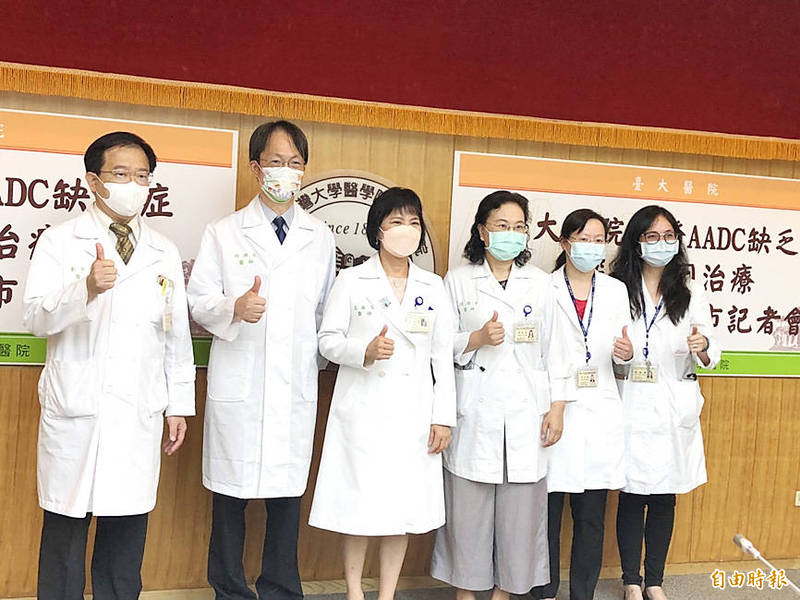《TAIPEI TIMES》 NTUH develops treatment for rare deadly condition

National Taiwan University Hospital researcher Hu Wu-liang, second left, and other hospital researchers appear at a news conference yesterday in Taipei. Photo: Yang Yuan-ting, Taipei Times
EU APPROVAL: The brain condition manifests mostly in infants, with 30 percent of the world’s cases in Taiwan, which prompted an NTUH team to find a cure
By Yang Yuan-ting and Jonathan Chin / Staff reporter, with staff writer
Taiwanese scientists have created the first genetic treatment approved by the EU for L-amino acid decarboxylase (AADC) deficiency, an extremely rare and fatal disorder, they said yesterday.
The treatment, given the trade name Upstaza, was on Wednesday approved for market by the European Medicines Agency, the EU’s main drug regulator, the National Taiwan University Hospital-based research team told a news conference.
AADC deficiency inhibits the secretion of an enzyme that is key to making dopamine, said team leader Hu Wu-liang (胡務亮), who is also the director of the hospital’s pediatrics and genetic medicine departments.
The disorder primarily manifests in infants and severely impedes their ability to develop speech, walk, sleep or swallow food, with death typically occurring before the age of five, he said.
The condition affects about 700 children in Taiwan, comprising 30 percent of the world’s AADC cases, suggesting that the genetic trait causing the disorder has a strong regional prevalence, Hu said.
As cases are rare in North America and Europe, where most of the world’s drugs are made, there was a lack of impetus among Western drugmakers to develop a treatment for the condition, he said.
In response, Hu launched an initiative to find a cure, and received the university hospital’s approval in his effort, which led to the creation of Upstaza in 2010, he said.
Upstaza is a one-time treatment that introduces a functioning AADC gene to the patient by directly injecting it into the patient’s brain, using modified adeno-associated viruses as the vehicle mechanism, Hu said.
An affected person with the replaced AADC gene would gain the ability to produce dopamine, leading to a partial recovery of bodily functions and providing hope for a normal life, Hu said, adding that the therapy has been proven by a 12-year tracking study.
A two-year-old patient who had been bedridden and unable to speak gained the ability to run, use staircases unassisted and verbally communicate within four years of receiving the treatment, he said.
“Using the technology, the hospital successfully treated the 30 Taiwanese patients [with AADC] to bring hope to their families,” Hu said.
The rights to the drug have been transferred to US-based PTC Therapeutics, which is exploring the possibility of applying Upstaza’s underlying viral and surgical technology to treat other conditions affecting the brain, he said.
Upstaza cannot be used for Parkinson’s disease, as the treatment requires intact neurons to work, Hu added.
新聞來源:TAIPEI TIMES















